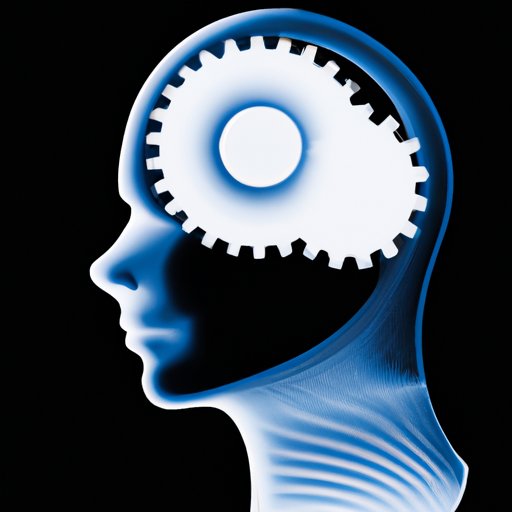Introduction
Invention can be defined as the act of creating something that did not exist before. It involves the process of designing, developing, and producing something new. In today’s constantly evolving world, innovation plays a vital role in driving progress and growth. Innovators strive to solve problems, meet needs, and improve the quality of life for people. This article explores the history, process, and impact of invention, as well as the role of innovation in transforming the world we live in.
History of Invention
Invention dates back to prehistoric times when early humans created tools and weapons to hunt and survive. Over time, innovations advanced as cultures developed, such as the invention of the wheel, writing, and irrigation in the ancient world. During the medieval period, inventions such as the windmill, the mechanical clock, and eyeglasses emerged. The Renaissance period ushered in technological breakthroughs that paved the way for the Industrial Revolution. One of the most revolutionary inventions was the printing press, which transformed the way information was distributed and greatly influenced the spread of knowledge and education.
Example: The Printing Press- Invented by Johannes Gutenberg in 1440, the printing press revolutionized the production of books. Prior to this, books were manually copied by scribes, which made them expensive, rare, and accessible only to the wealthy. The printing press allowed for the mass production of books, making them more affordable, widespread, and accessible to the general population. This invention helped to lay the foundation for the modern world, as it expanded literacy, increased access to information, and impacted communication, education, and culture.
The Process of Invention
The process of invention involves several steps, including ideation, conceptualization, prototyping, and commercialization. An inventor starts with an idea, conducts research, and creates a design. Once a prototype is produced, it is tested to identify any flaws or areas that require improvement. Throughout the process, an inventor faces challenges and obstacles, such as technical difficulties, financial constraints, and legal barriers.
Example: Thomas Edison and the Light Bulb- Edison made over a thousand attempts to invent a long-lasting electric light bulb, facing setbacks such as burnt filaments, short circuiting, and limited power sources. Despite these challenges, he persevered, improving the design and the materials used. His invention transformed the way we live by providing a reliable source of artificial light that made electricity accessible to everyone.
The Future of Invention
The 21st century is marked by emerging technologies and trends that are reshaping the world we live in. Innovations in artificial intelligence, machine learning, robotics, biotechnology, and nanotechnology are changing the way we work, communicate, and think. These technologies offer numerous possibilities and hold the potential to solve some of the world’s greatest challenges, such as climate change, healthcare, and poverty. However, they also pose significant risks and ethical dilemmas that need to be addressed.
Example: Artificial Intelligence and Machine Learning- AI and machine learning are transforming various industries by automating tasks, improving efficiency, and enhancing decision-making. They are used in areas such as healthcare, finance, transportation, and entertainment. AI also raises concerns about job displacement, privacy, security, and bias. The development of ethical standards and regulations is required to ensure that these technologies serve the common good and do not violate human rights.
Inventions that Changed the Modern World
The modern world is characterized by rapid and constant change, driven by technological innovations that have transformed the way we live, work, and interact. Some of the most notable inventions of recent times include the internet, smartphones, social media, and e-commerce. These innovations have revolutionized communication, entertainment, education, and commerce, improving accessibility, connectivity, and convenience.
Example: The Internet and Smartphones- The internet and smartphones have brought about a digital revolution that has changed the way we communicate, access information, and conduct business. Through these technologies, people from different parts of the world can connect and communicate in real-time, making the world a more inclusive and interconnected place. The internet and smartphones have also enabled the growth of e-commerce, enabling people to shop, bank, and work from anywhere, anytime.
Creativity and Invention
Creativity is a fundamental aspect of invention, as it involves generating novel and valuable ideas that can be translated into innovative solutions. Creativity can be fostered through various techniques and strategies, such as brainstorming, mind mapping, free association, and reverse thinking. Creativity involves thinking outside the box, challenging assumptions, and exploring different perspectives.
Example: Free Association by Leonardo da Vinci- Da Vinci is regarded as one of the greatest inventors of all time, having created some of the most groundbreaking innovations in history. One of his creative techniques was free association, a process of generating ideas by allowing the mind to make random connections between seemingly unrelated concepts. This technique allowed him to come up with original and unconventional ideas that led to inventions such as flying machines, military weapons, and scientific instruments.
Conclusion
Innovation is a critical driver of progress and prosperity, as it helps to solve problems, meet needs, and improve the quality of life for people. Through history, invention has transformed the world, enabling advancements in science, technology, medicine, and culture. The future of invention offers endless possibilities, but also presents significant challenges that require thoughtful consideration and ethical reflection. The importance of innovation for the future cannot be overstated, as it has the potential to shape the world in ways we cannot yet imagine.
(Note: Is this article not meeting your expectations? Do you have knowledge or insights to share? Unlock new opportunities and expand your reach by joining our authors team. Click Registration to join us and share your expertise with our readers.)
